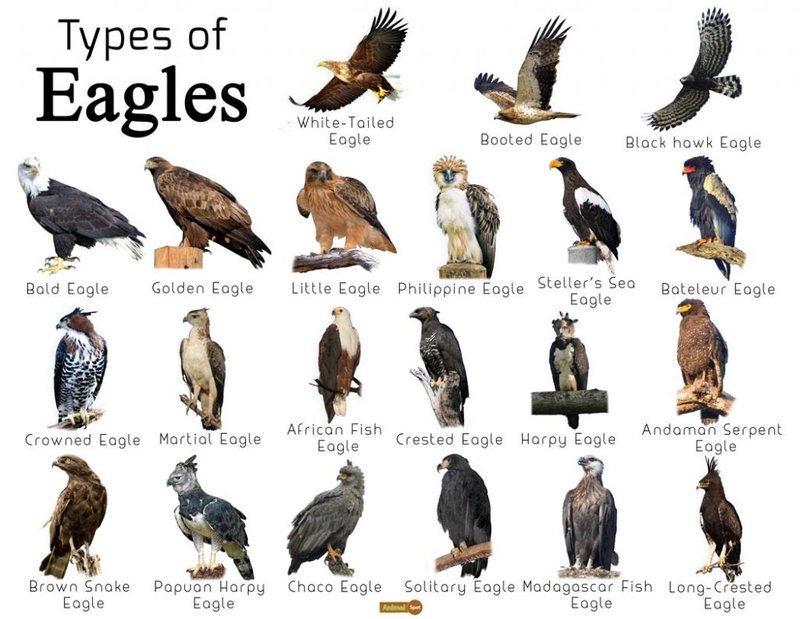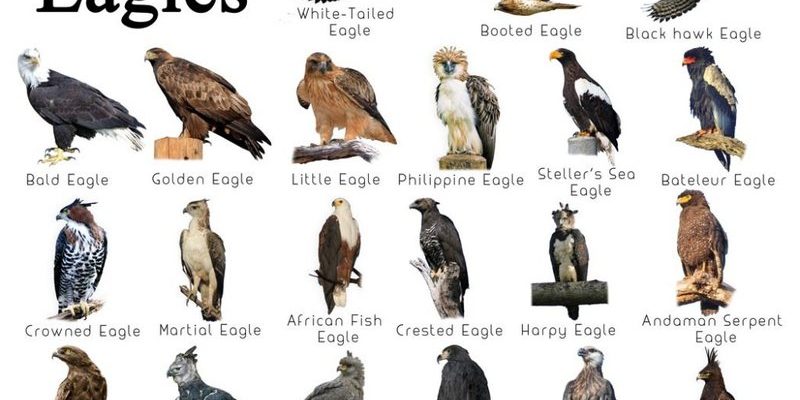
The Crowned Eagle is often found in the tropical forests of Africa, where it reigns as one of the continent’s top predators. But you might be wondering how it compares to other birds of prey like the Bald Eagle or the African Fish Eagle. Well, grab a cup of coffee, and let’s dive into the fascinating differences between the Crowned Eagle and some of its similar bird species.
What Makes the Crowned Eagle Unique?
First off, let’s talk about the physical attributes of the Crowned Eagle. This bird can reach an impressive wingspan of about 6 feet. That’s like a toddler stretching out their arms wide! Its feathers are mostly dark brown with a striking white crown and markings on its face, giving it a royal appearance. This look isn’t just for show; the unique coloring helps it blend into the treetops where it hunts.
In terms of size, the Crowned Eagle is quite robust, weighing between 3.5 to 5.5 kilograms (about 7.7 to 12.1 pounds). This bulkiness allows it to tackle larger prey, like monkeys and small antelopes. Here’s the thing: while many eagles are known for targeting fish or smaller birds, the Crowned Eagle has a more diverse diet. It’s designed for strength and agility rather than just pure speed.
Interestingly, the Crowned Eagle has strong, powerful legs and large talons. These adaptations give it an advantage when grabbing onto prey. Think of them like specialized tools that help it hunt effectively in its jungle habitat.
Crowned Eagle vs. Bald Eagle
Now, let’s take a look at how the Crowned Eagle measures up against the Bald Eagle. The Bald Eagle, known as a symbol of the United States, has a distinctive white head and tail, which makes it instantly recognizable. Unlike the Crowned Eagle, it primarily feeds on fish, using its keen eyesight to spot them from high above.
The Bald Eagle is also larger on average and has a wingspan of about 7 feet. This extra size gives it an advantage when soaring over open water, but it also means it requires a different type of habitat—think rivers and lakes, rather than dense forests.
This leads to a significant difference in their hunting techniques. While the Crowned Eagle ambushes its prey from tree branches, the Bald Eagle often snatches fish directly from the water’s surface, showcasing a different hunting style. Their diets and habitats reflect how each has adapted to its environment, each magnificent in its own right.
Crowned Eagle vs. African Fish Eagle
Next on our comparison list is the African Fish Eagle. This bird, with its striking white head and yellow beak, is often found near bodies of water across Africa. As its name suggests, it primarily feeds on fish but will also snatch up water birds when the opportunity arises.
In terms of size, the African Fish Eagle is slightly smaller than the Crowned Eagle, weighing around 3 kilograms (about 6.6 pounds) with a wingspan of about 6.5 feet. This makes it more agile when zipping over water, but it also means it has to be more selective with its hunting strategies.
You might notice that while they share a habitat, their hunting techniques are quite different. The African Fish Eagle’s ability to dive for fish contrasts with the Crowned Eagle’s preference for more terrestrial prey. This specialization allows each to thrive in its own niche within the ecosystem.
Similarities with Other African Eagles
When looking at the Crowned Eagle, it’s important to recognize its similarities with other African eagles, such as the Steppe Eagle or the Tawny Eagle. While these birds don’t share the same hunting focus as the Crowned Eagle, they all have one thing in common: they are formidable predators.
For instance, the Steppe Eagle is known for its long migrations and tends to feed on small mammals and birds, much like the Crowned Eagle. However, it lacks the striking features and size that make the Crowned Eagle so distinctive.
Similarly, the Tawny Eagle has a more varied diet as well, but it often hunts in open areas rather than the dense forests preferred by the Crowned Eagle. These differences stem from their specific habitats and hunting techniques, but they all contribute to the rich diversity of avian life in Africa.
Conservation Status and Importance
Understanding the conservation status of the Crowned Eagle and its relatives is crucial. As habitats are being lost to deforestation and urbanization, the Crowned Eagle faces challenges that threaten its existence. Unlike some more adaptable species, this eagle relies heavily on its forest environment.
Organizations are working tirelessly to protect such habitats, as the loss of these birds would not only diminish biodiversity but also disrupt the ecosystems they help manage. Keeping a balance in nature is essential, and the Crowned Eagle plays a significant role in maintaining that balance as a top predator.
The beauty of these eagles extends beyond their physical attributes; they are vital players in their ecosystems. Conservation efforts are critical for their survival, ensuring that future generations will get to witness their majesty.
Why Knowing These Differences Matters
So, why does it matter to understand the differences between the Crowned Eagle and similar species? For one, it enriches our knowledge of biodiversity. When we appreciate the unique traits and roles of different eagles, we become more invested in their conservation. It connects us to the natural world.
Moreover, knowing about these magnificent birds can inspire awe and respect. You might find yourself looking up at the sky during a hike, hoping to catch a glimpse of the Crowned Eagle or another raptor soaring above. This awareness fosters a sense of responsibility; by caring for their habitats, we help ensure that these incredible birds continue to thrive.
In short, appreciating these differences isn’t just about being a bird enthusiast; it’s about recognizing the interconnectedness of life on our planet and the crucial roles each species plays.
The Crowned Eagle is a fascinating bird, uniquely suited to its environment and remarkably different from its bird of prey relatives. By understanding its characteristics and comparing it to species like the Bald Eagle and the African Fish Eagle, we gain a deeper appreciation for the diversity of the avian world.
In a way, learning about these differences opens up a dialogue about the importance of conserving our natural habitats. If we take the time to understand and protect these incredible creatures, we ensure the legacy of their beauty and power continues for generations to come. So, the next time you spot a large bird in the sky, remember the story it carries with it and the role it plays in our shared ecosystem.

